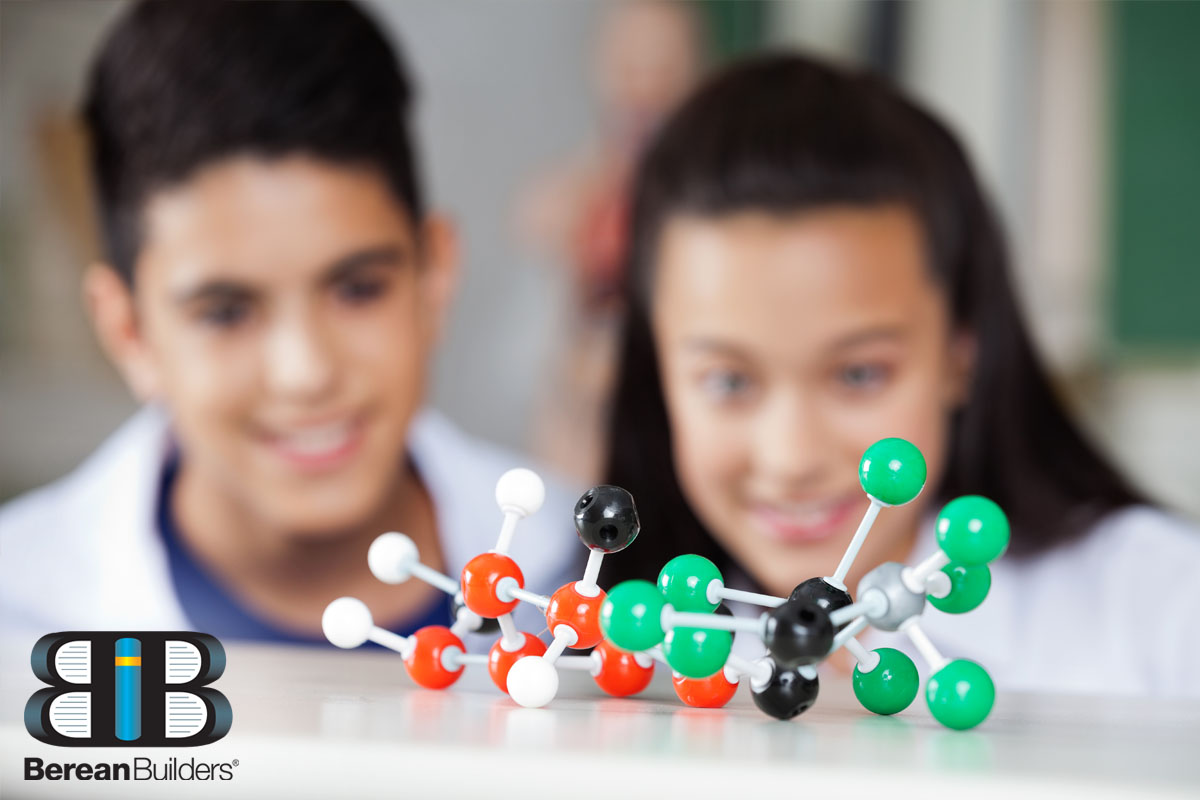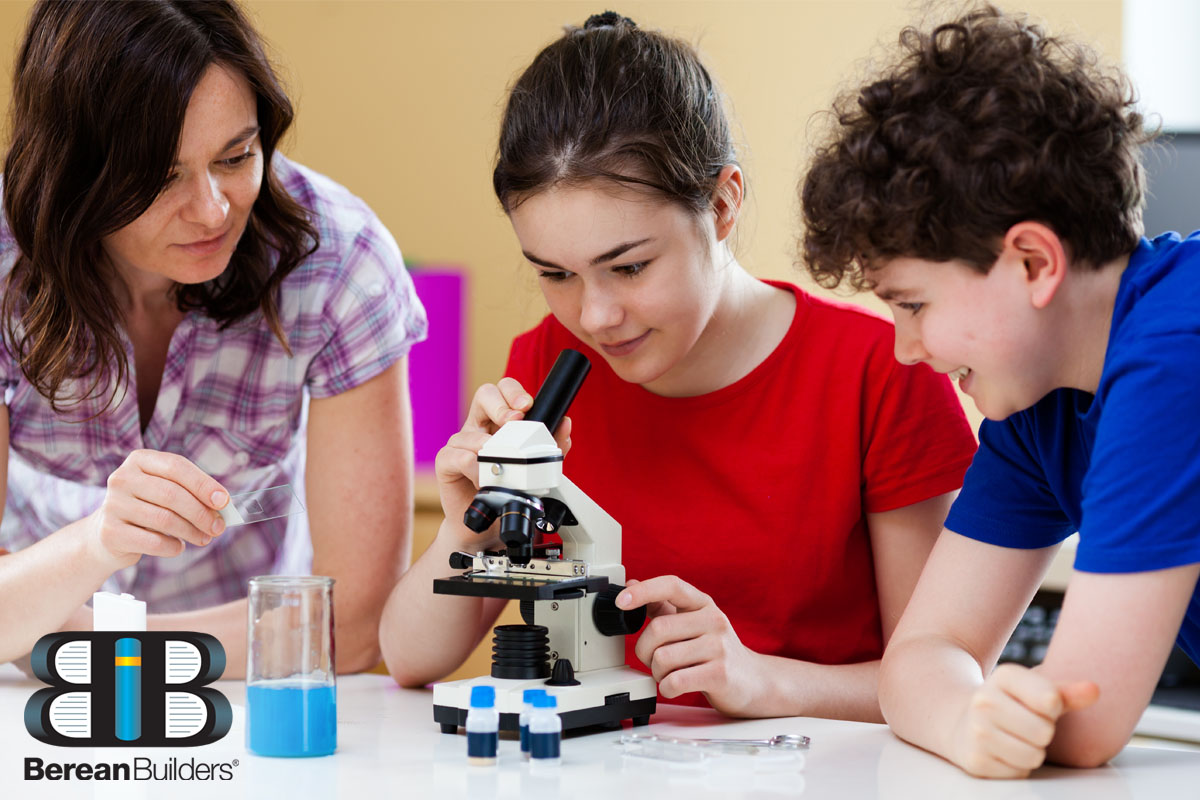
Homeschool Science with Berean Builders
At Berean Builders, we are committed to helping you create critical thinkers in your homeschool through our science courses covering every grade level. Whether science is your favorite subject, or it gives you pause, our courses bring clarity to scientific ideas and engaging experiments that bring the concepts to life.
Dr. Jay Wile has created a series of science courses designed to help you teach science at home.
Wondering where to begin?
Take a look at your homeschool needs. We offer a list of questions and suggestions to help you get started.
Ready to dive into building critical thinkers? Let’s take a look at our courses designed to simplify teaching science at home while offering your student a well-defined path to understanding and solid preparation for further studies in college.
Homeschool Science Curriculum Options For Elementary School
For students at the elementary level, we offer fun and engaging learning opportunities through our chronological journey of science through history. If you’re excited for your student to follow along from the earliest scientific discoveries to modern-day advancements, this series is for you!
Elementary students are just starting to notice the science of the world around them. What better way to apply their wonder than to introduce basic scientific concepts found in everyday discoveries. While they are learning to read and write and perform mathematical operations, they can use their new-found skills to explore science through our courses.
Begin at the beginning with a look at the science of Creation. Dr. Wile presents the basics in an easy-to-understand format that opens up the world for your student to discover more. Dive into kitchen science with our hands-on experiments that follow along with the textbook concepts to help your student understand the science behind the explanations.
Throughout our Science through HIStory courses, your student will follow the scientists of the ancient world and beyond to see how critical thinking played an enormous role in scientific developments.
From the ancient to the medieval to the scientific revolution ages your student will continue expanding on the information they gathered, hanging details on the hooks of their previous discoveries, all while improving those basic reading, writing, and math skills they’re learning by documenting their studies in notebooks.
Our engaging elementary courses take your student from Creation to Marie Curie and offer a clear view of the science of our world in a way your elementary student will enjoy.
Science Curriculum For Homeschooling Middle School
Middle school and junior high courses take learning up a notch and bring students into the atomic age, along with our in-depth earth science course designed to go deeper into the elementary concepts your student has already learned.
By this stage, your student may be interested in online studies. Our courses create a dynamic environment for learning, participation, and feedback.
What if your student’s style doesn’t quite line up with our presentations? You’re in luck. We also offer self-paced recorded classes so your student can take their time over a concept or power through something they quickly understand.
The middle school science courses are customizable for your homeschool student, which makes Berean Builders science a good fit for many different learning styles.
High School Homeschool Curriculum For College Prep
High school science can sometimes be intimidating, but we got you. We offer high school level science courses in biology, chemistry, and physics, plus online classes and direct access to Dr. Wile for questions about concepts that may be puzzling.
Our courses present the sciences with an undercurrent of wonder about the design of our world and universe. With clear explanations and hands-on experiments, your high schooler will develop critical thinking skills that are necessary and applicable in college and university levels of learning.
Unsure which you should teach first in high school? Check out this article on the order of courses. (Hint: it has to do with math skills!)
Interested in offering your student honors courses to further ready them for college? Any of our high school courses can earn an honors credit when specific conditions are met. We detail these here.
Berean Builders In Your Homeschool
Whether your student wants to learn from a textbook or online, use audiobooks or pre-recorded lessons, Berean Builders has science presentations designed to fit all learning styles.
With plenty of real-world experiments to conduct right in your home, your student will have first-hand experiences with the concepts from our courses.
And when something is just not clicking, we’re here for you.
Science questions, course questions, experiment questions, technical support? Everything you need to bring science to your homeschool from elementary to middle school to high school is available right here at Berean Builders.
Start building your critical thinkers today.














